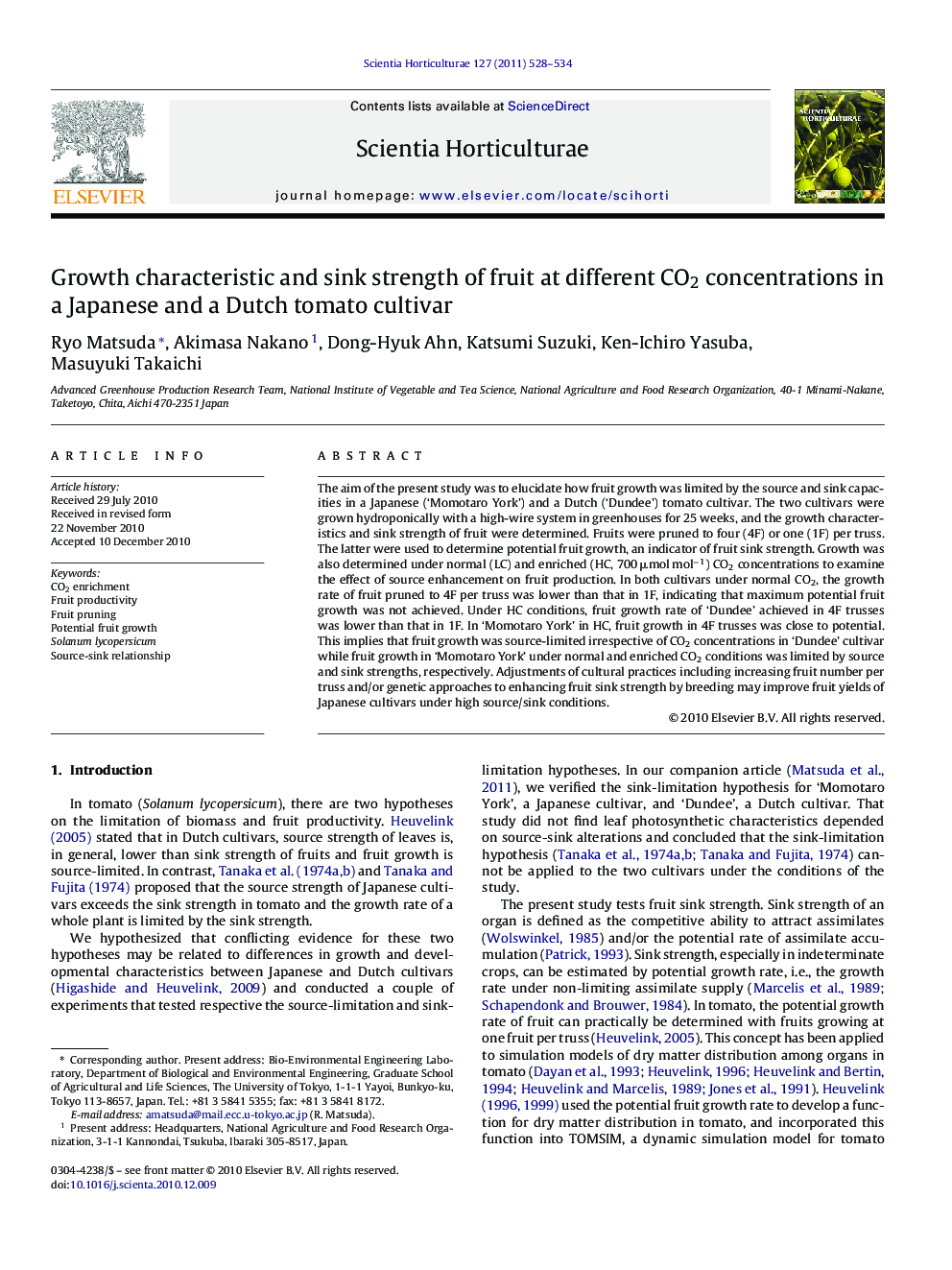| Article ID | Journal | Published Year | Pages | File Type |
|---|---|---|---|---|
| 4568383 | Scientia Horticulturae | 2011 | 7 Pages |
The aim of the present study was to elucidate how fruit growth was limited by the source and sink capacities in a Japanese (‘Momotaro York’) and a Dutch (‘Dundee’) tomato cultivar. The two cultivars were grown hydroponically with a high-wire system in greenhouses for 25 weeks, and the growth characteristics and sink strength of fruit were determined. Fruits were pruned to four (4F) or one (1F) per truss. The latter were used to determine potential fruit growth, an indicator of fruit sink strength. Growth was also determined under normal (LC) and enriched (HC, 700 μmol mol−1) CO2 concentrations to examine the effect of source enhancement on fruit production. In both cultivars under normal CO2, the growth rate of fruit pruned to 4F per truss was lower than that in 1F, indicating that maximum potential fruit growth was not achieved. Under HC conditions, fruit growth rate of ‘Dundee’ achieved in 4F trusses was lower than that in 1F. In ‘Momotaro York’ in HC, fruit growth in 4F trusses was close to potential. This implies that fruit growth was source-limited irrespective of CO2 concentrations in ‘Dundee’ cultivar while fruit growth in ‘Momotaro York’ under normal and enriched CO2 conditions was limited by source and sink strengths, respectively. Adjustments of cultural practices including increasing fruit number per truss and/or genetic approaches to enhancing fruit sink strength by breeding may improve fruit yields of Japanese cultivars under high source/sink conditions.
Research highlights▶ Fruit growth was source-limited in a Dutch tomato cultivar irrespective of CO2. ▶ Fruit growth was source-limited in a Japanese cultivar under normal CO2. ▶ Fruit growth was sink-limited in the Japanese cultivar under high CO2. ▶ The Japanese cultivar had a lower sink/source ratio than the Dutch cultivar.
